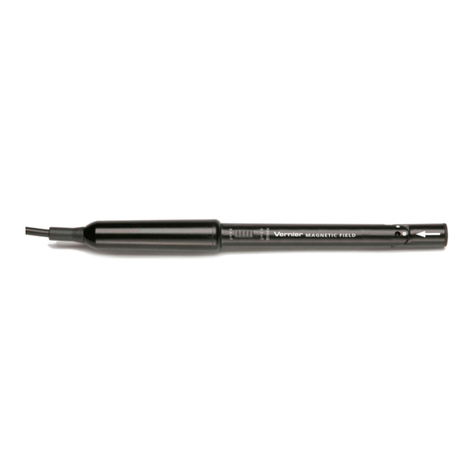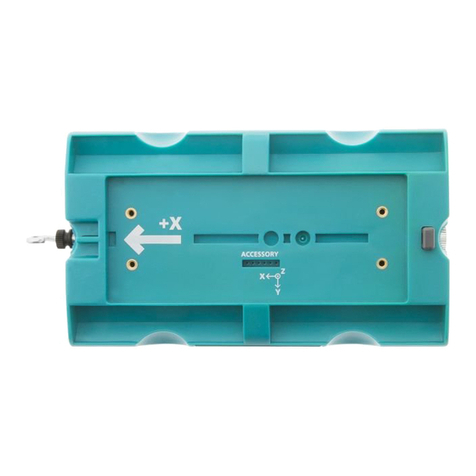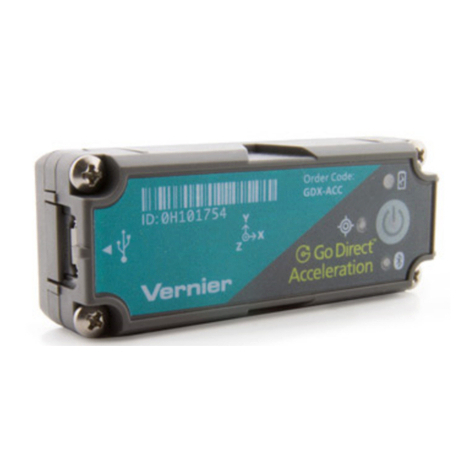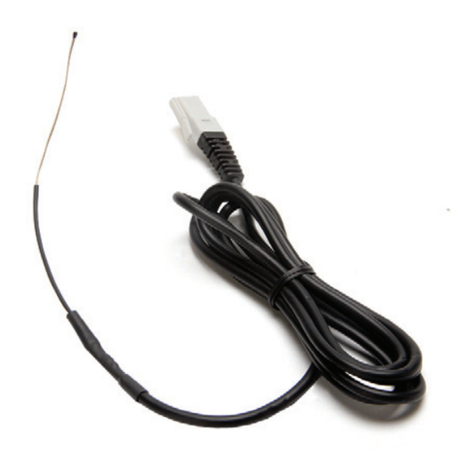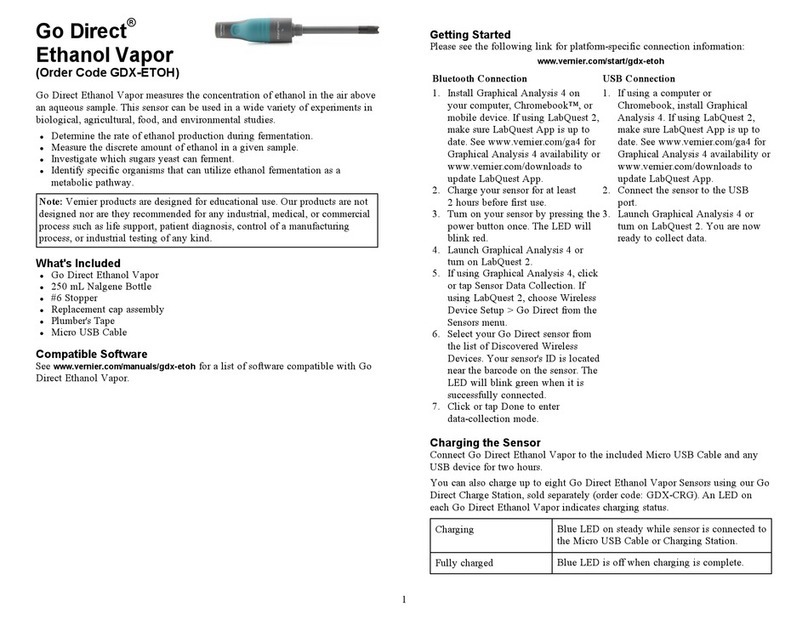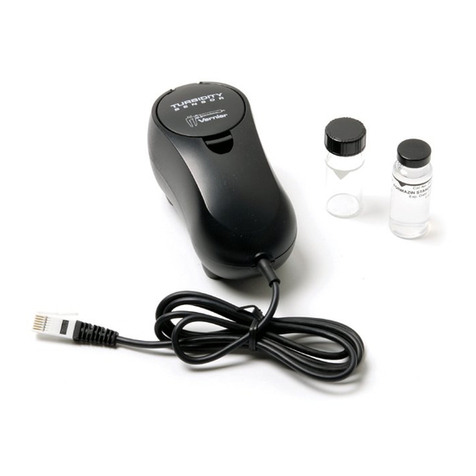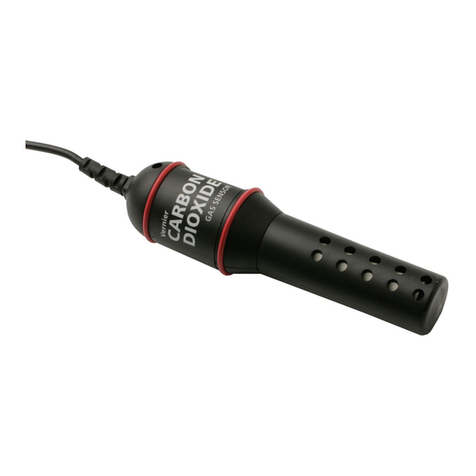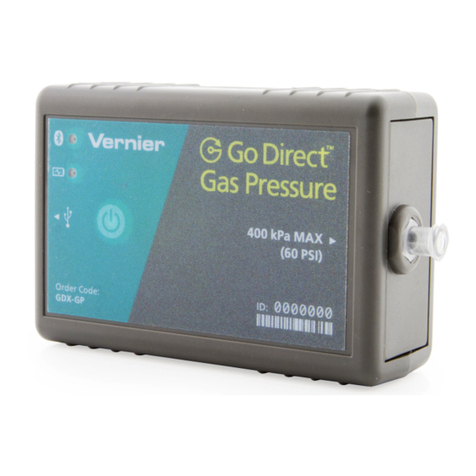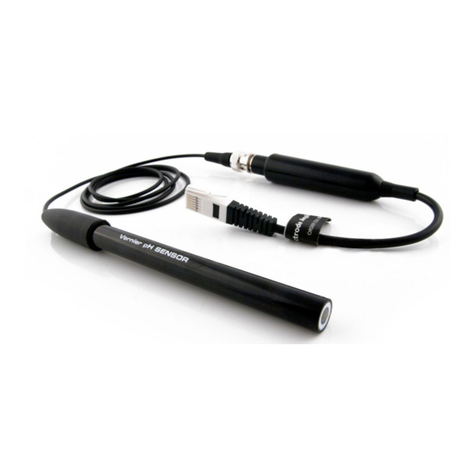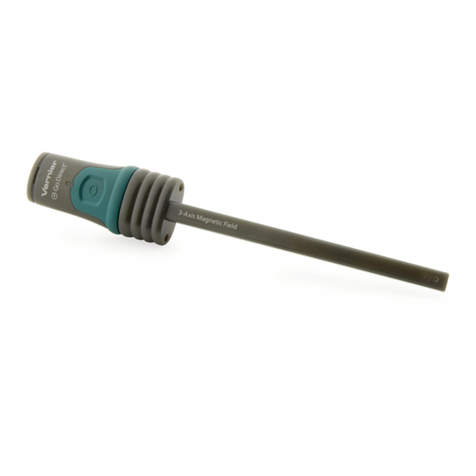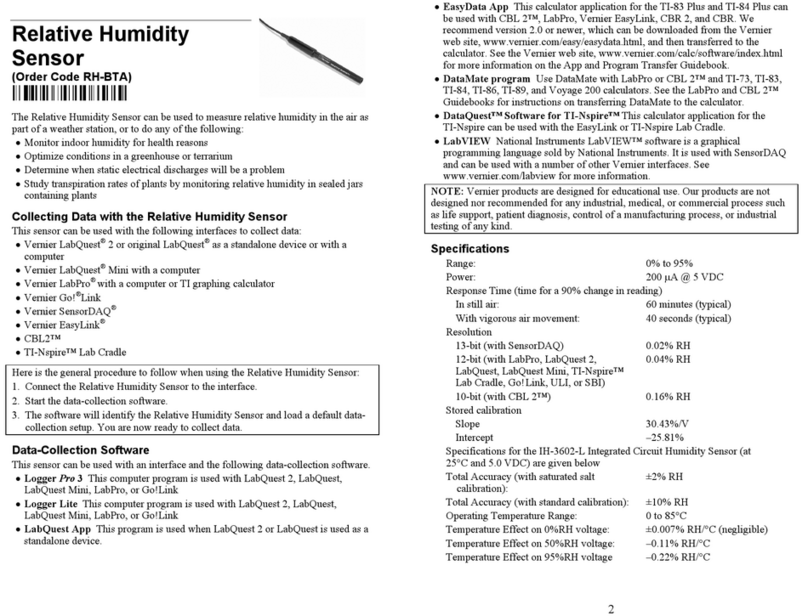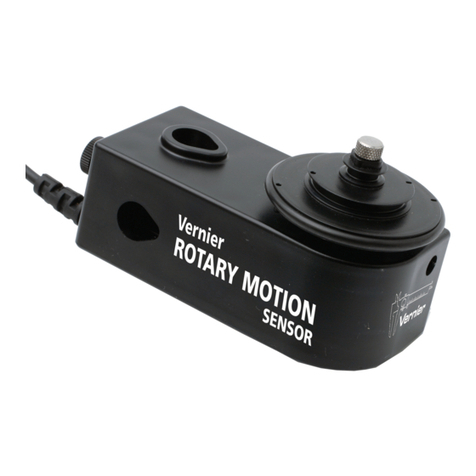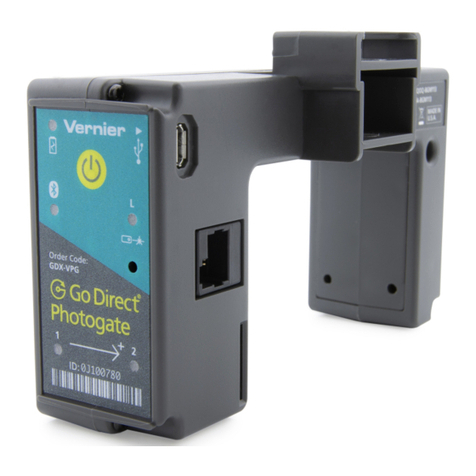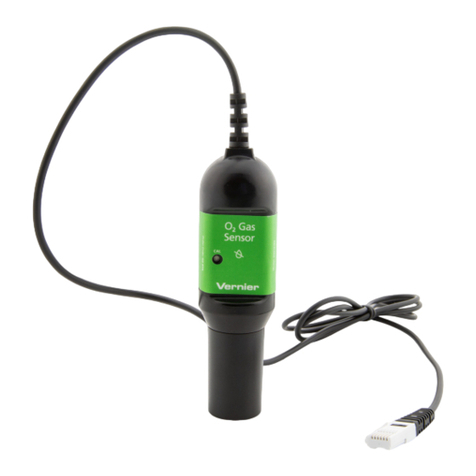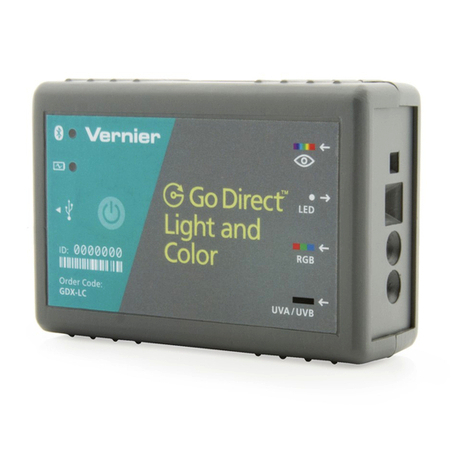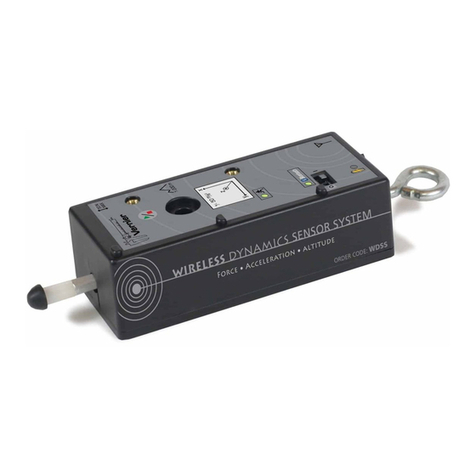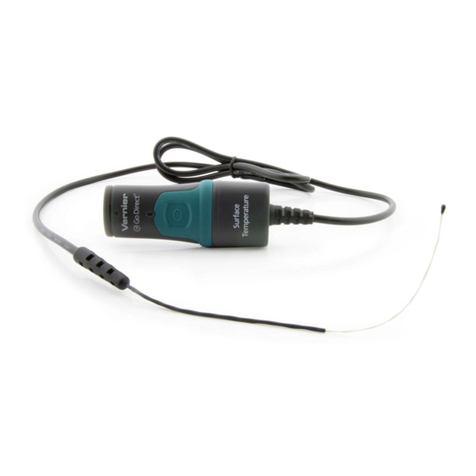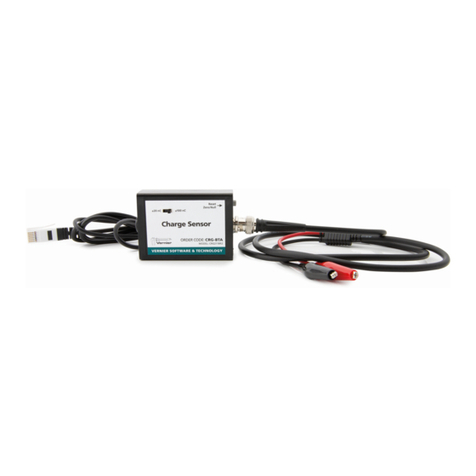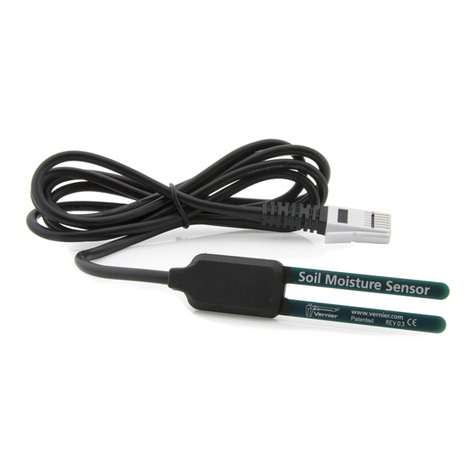
1
Note that you cannot calibrate a light sensor using a broadband light source (such
as a lamp or the sun) against another light sensor of known calibration unless the
spectral response of the two sensors is exactly the same. Similarly, any intensity
measurements of a broadband source using two sensors with different spectral
response cannot be directly compared. For example, a reading from another
manufacturer’s UVB sensor would not correspond to the readings from the
Vernier UVB Sensor. In all these cases a direct comparison is not appropriate,
since the reading from any light sensor is a convolution of the spectral distribution
of the incident light and the spectral response of the sensor.
Specifications
UV peak sensitivity one volt per 204 mW/m2at 300 nm
Wavelength sensitivity region,
approximate
265 to 322 nm, 10% sensitivity points.
See graphs for more detail.
12-bit resolution 0.25 mW/m2
Dimensions 21 cm by 2 cm diameter
Time response approximately 2 seconds to reach 95% of
final reading
Stored calibration slope (gain): 204 mW/(m² V)
intercept (offset): 0
Irradiance Vout * 204 mW/(m2V)
Care and Maintenance
Do not wrap the cable tightly around the sensor for storage. Repeatedly doing so
can irreparably damage the wires and is not covered under warranty.
How the Sensor Works
The Vernier UVB sensor is built around a broadband UV sensitive silicon
photodiode. The diode produces a current proportional to the UV intensity. A
wavelength selective filter limits light striking the diode to only the UVB region.
The signal from the diode is amplified and sent to the output.
UV Terminology
The Vernier UVB and UVA (order code UVA-BTA) Sensors respond to specific
regions of the electromagnetic spectrum. The wavelength region from 320 to
400nm is commonly called UVA radiation, and 280 to 320nm is called UVB
radiation. Wavelengths shorter than 280 nm fall into the UVC spectrum. Neither
Vernier sensor is sensitive to UVC radiation.
UVB Sensor
(Order Code UVB-BTA)
The UVB Sensor is an ultraviolet light sensor
that responds primarily to UVB radiation
(approx. 265 to 322 nm). The UVB sensor is
recommended for experiments involving
sunlight.
Note: Vernier products are designed for educational use. Our products are not
designed nor are they recommended for any industrial, medical, or commercial
process such as life support, patient diagnosis, control of a manufacturing
process, or industrial testing of any kind.
Compatible Software
See www.vernier.com/manuals/uvb-bta for a list of software compatible with the
UVB Sensor.
Getting Started
1. Connect the sensor to the interface (LabQuest Mini, LabQuest 3, etc.).
2. Start the appropriate data-collection software (Logger Pro®, LabQuest®App,
or Graphical Analysis™) if not already running, and choose New from File
menu. The software will identify the sensor and load a default data-collection
setup. You are now ready to collect data.
If you are collecting data using a Chromebook™, mobile device such as iPad®or
Android™ tablet, or a Vernier wireless sensor or interface, please see the
following link for up-to-date connection information:
www.vernier.com/start/uvb-bta
Calibrating the Sensor
You do not have to perform a new calibration when using the UVB sensor. You
can use the calibration that is stored on the sensor itself.
It is quite difficult to calibrate a UV sensor to read in absolute units, since you
must have a source of known UV intensity and spectral distribution. More often
you will simply want to calibrate the sensor in terms of a relative intensity. In that
case, you will point the sensor at a UV source (most often the sun) and define that
intensity as 100%. To perform this kind of calibration, complete the following
steps for a two-point calibration. One of the points is your zero, with no light
striking the sensor. Cover the tip of the UVB sensor with a clean opaque object.
Select the calibration option of the program you are using. Enter 0(zero) as the
first known intensity. Now allow full UV intensity to strike the sensor. Since the
orientation of the sensor affects the reading, it is best to hold the sensor in place
with a clamp on a ring stand. To point the sensor directly at the sun, make the
shadow of the sensor tube as small as possible. Enter 100 as the next known
intensity. Subsequent measurements will be relative to this second intensity.

